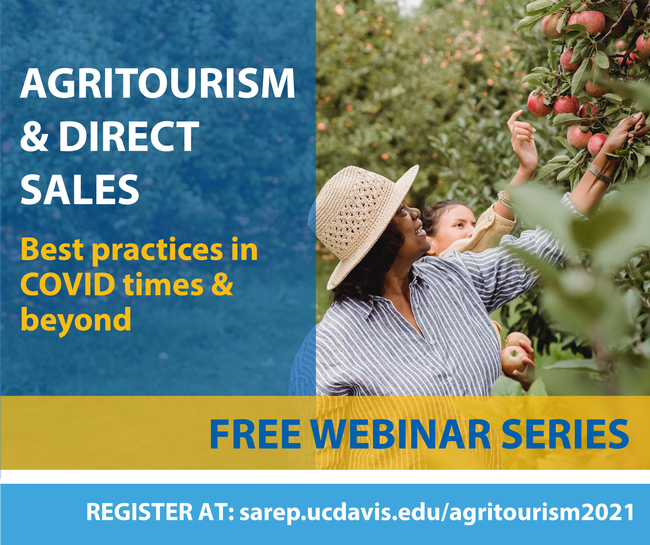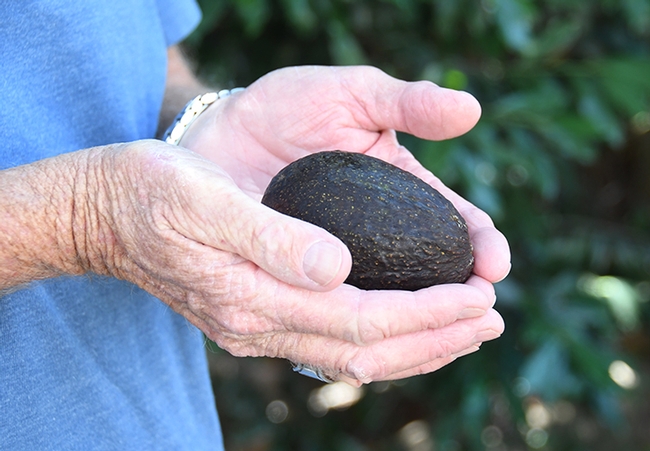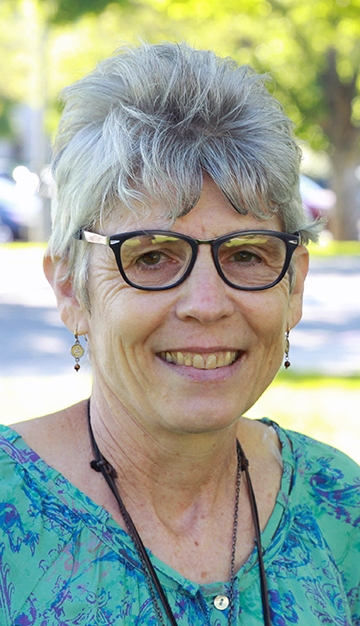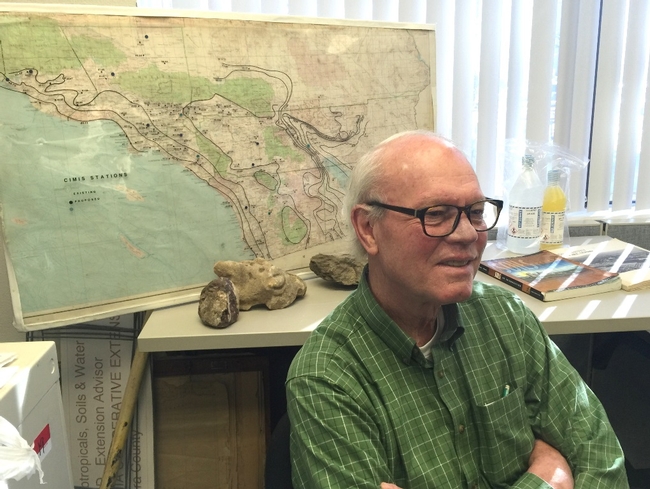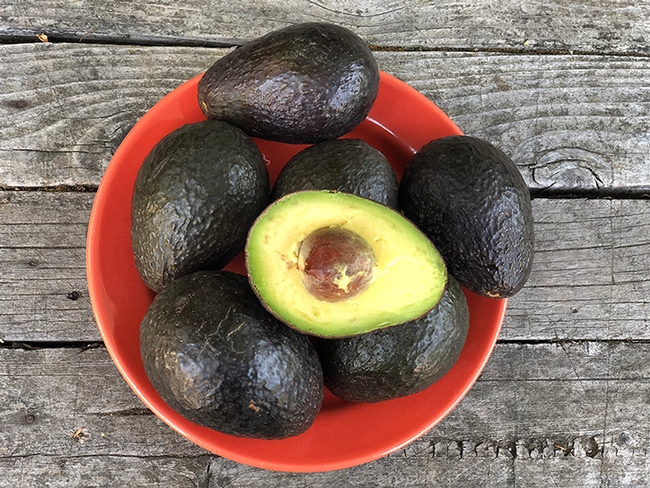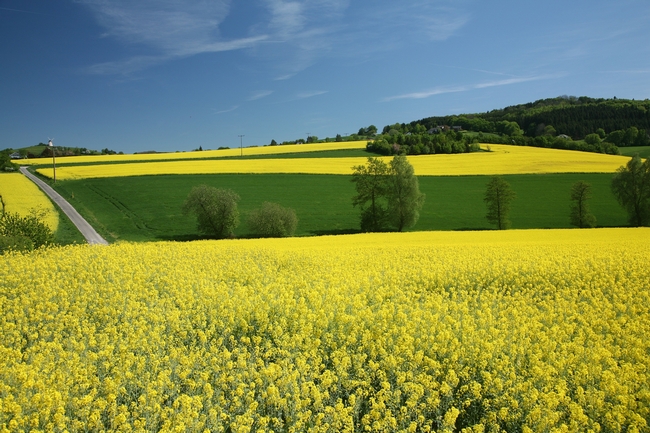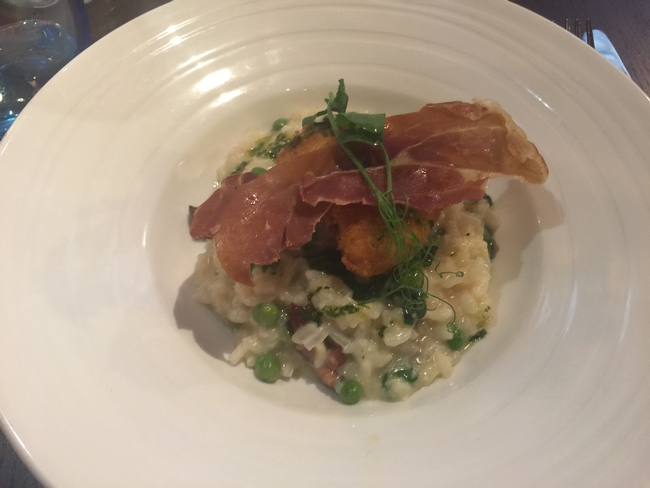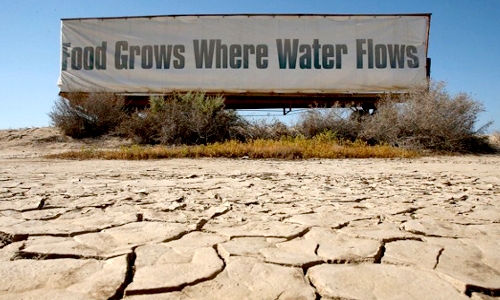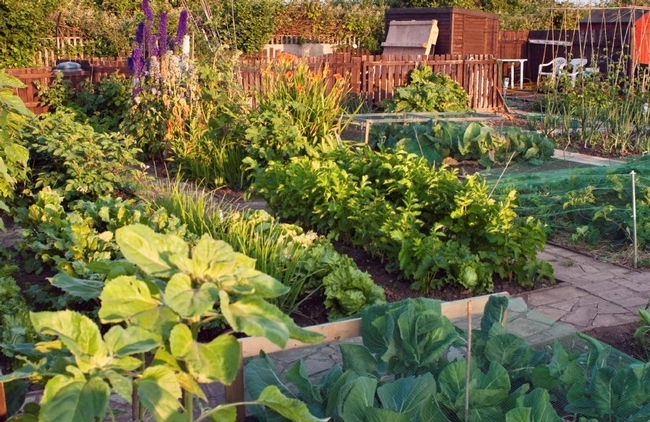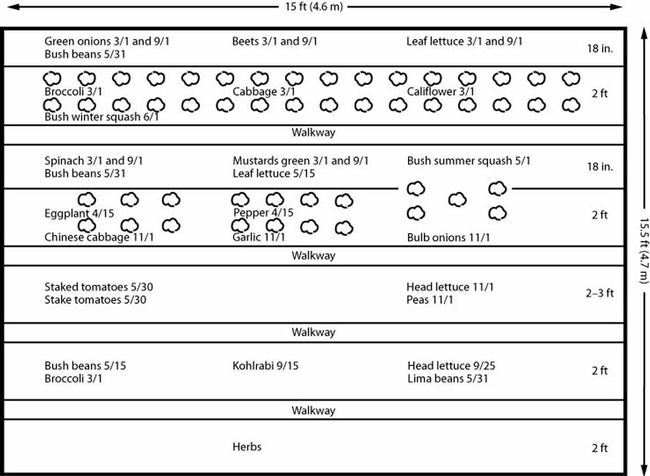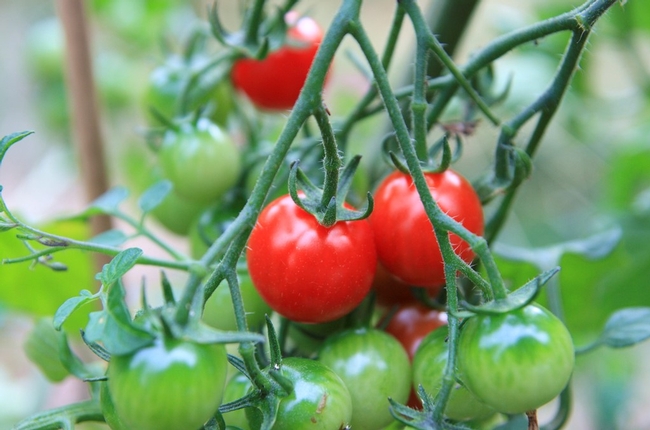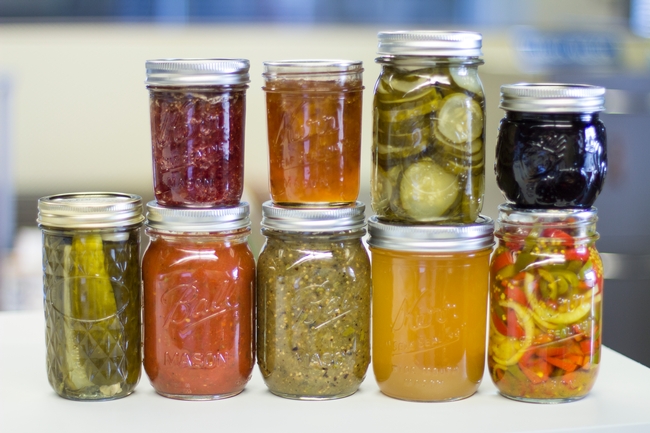Posts Tagged: California
UC ANR offers free online trainings on direct sales and agritourism
The economic shocks brought on by the COVID-19 pandemic have pushed California's farmers and ranchers to quickly embrace new business practices — including creative new ways to sell directly to consumers. UC ANR and partners are offering an eight-part series of free virtual trainings to help producers build their businesses with agritourism and other direct-to-consumer sales.
The COVID-19 pandemic has been a huge shock to California's food economy, forcing many of the state's growers to embrace new business practices and drop old ones as “shelter-in-place” directives rolled across the state.
But the pandemic's challenges bring new opportunities too. Consumers' interest in local food and local outdoor experiences has grown immensely, from community-supported agriculture (CSA) and other online ordering, delivery and on-farm pickup options, to visits to farm stands, U-pick operations and other family-friendly socially distanced outdoor activities.
Pivoting to these new marketing channels opens new revenue opportunities for farmers and ranchers across California and the nation. But each new marketing channel also demands new skills and connections.
To help build growers' skills to embrace these market channels, the University of California Sustainable Agriculture Research and Education Program (UC SAREP) at UC Agriculture and Natural Resources is partnering with the Community Alliance of Family Farmers (CAFF) and expert growers across California to offer the free webinar series Agritourism and Direct Sales: Best practices in COVID times and beyond.
Through eight one-hour virtual trainings held this spring, participants will learn about best practices for implementing a variety of direct-to-consumer sales approaches. These trainings are offered to anyone interested in learning more about direct-to-consumer sales and agritourism. Topics and dates are:
| Getting started with community supported agriculture |
Tuesday February 23, 11am–12pm PST |
| Best practices for U-pick operations | Monday March 8, 3-4pm PST |
| Operating a safe, healthy and successful farm stand | Monday March 22, 3-4pm PST |
| Best practices for visitor interaction with animals | Monday April 5, 3-4pm PST |
| Best practices for farm tours, workshops and farm-based education | Monday April 19, 3-4pm PST |
| Online sales options and methods | Monday May 3, 3-4pm PST |
| Creative marketing and staying connected with social media | Monday May 17, 3-4pm PST |
| Community collaboration – farm trails, tourism partners and more | Monday May 24, 3-4pm PST |
Register at sarep.ucdavis.edu/agritourism2021.
For more information:
Penny Leff, UC SAREP, paleff@ucanr.edu, 530.902.9763 (cell)
Funding for this webinar series was made possible by the U.S. Department of Agriculture's (USDA) Agricultural Marketing Service through grant #AM200100XXXXG177. Its contents are solely the responsibility of the authors and do not necessarily represent the official views of the USDA.
Why 'AA' is for Avocado Addict
If you're like most of us, you “go bananas” for a banana for breakfast.
It's healthy, nutritious and packed with potassium.
But wait! You should probably go bananas for another fruit--that pear-shaped avocado. Did you know the avocado provides more potassium than a banana?
It does. A medium-sized banana yields 422 milligrams of potassium, while a medium-sized avocado, a whopping 708 milligrams.
Dietitian Linda W. Adams of UC Davis Occupational Health Services (among her responsibilities: teaching a 52-week UC Davis Diabetes Prevention Program) says “I think my favorite part about avocados, in addition to their wonderful flavor, is that they are full of monounsaturated, heart-healthy fat AND have more potassium than bananas! These two nutrients are lacking in many Americans' diets.”
“Eating more unsaturated fats -- as opposed to saturated fats and processed carbohydrate -- is a delicious step we all can take to maximize cardiovascular health,” Adams says. “Avocados are such a delicious way to do that!"
We love our avocados, our veritable green goddess that never disappoints, never deceives, never dissatisfies, whether we “butter” them on toast in the morning for breakfast, or slice or chunk or cube them for our salads at lunch and dinner. Health-conscious folks call them a superfood, and even mash and freeze them to ensure a steady supply in the winter. There's even a website on “50 Things to Love About Fresh Avocados.”
This year, California's 2000 avocado growers anticipate a yield of 374.6 million pounds. That crop forecast, according to Tom Bellamore, president of the California Avocado Commission, is nearly double the yield of the 2017 crop and “despite the ravages of Mother Nature in California's avocado growing regions.”
UC Cooperative Extension adviser and avocado researcher Ben Faber of Ventura and Santa Barbara counties, points out that the avocado is really a fruit, not a vegetable. “The Supreme Court classified the tomato in 1920 or so as a vegetable because that's the way people think of it and it was taxed differently for tariffs. Politics or botany separates a lot of things in our lives.”
“The avocado is an amazing fruit,” Faber says. “It grows on a tree and comes to maturity, reaches certain oil content and a stage at which it will ripen, but it does not ripen on the tree. It needs to be removed from the tree before it will soften. If the fruit is removed before it has reached maturity it will not soften, and will remain rubbery and inedible.”
“One of the problems is that the fruit will hang on the tree for an extended period of time and it is hard to know when they are mature,” Faber points out. “Avocados are not like apricots where you have about two weeks to get the fruit off before it falls off. As the fruit stays on the tree, it gradually develops more and more oil content and has a richer flavor.”
What if the fruit stays on the tree too long? “It can develop an almost rancid flavor,” Faber says. “So it is good to know when the best, acceptable flavor is. Avocado varieties fall into general seasonal periods when they are mature, such as ‘Fuerte' and ‘Bacon' in winter, ‘Hass' in spring/summer, ‘Lamb-Hass' in summer/fall.”
The fruit will typically be ripe in seven to ten days, Faber advises. “If you want to speed things along a bit you can take three or four avocados and place them in a loosely closed paper bag with two or three Red or Golden Delicious apples or ripe kiwifruit. The purpose of the apples or kiwifruit is that these fruit produce a natural plant hormone, ethylene, that will help stimulate the avocado to produce its own ethylene. Apples and kiwifruit are known to produce lots of ethylene. The Delicious apples are varieties that produce more ethylene than other apple varieties. You can keep them even after they are shriveled and they will be producing ethylene.”
Never place your avocados in a plastic bag “unless you keep it open since the fruit needs to breathe during this process,” he says. “Just keep the fruit on your kitchen counter or in a warm place; 68F is the ideal temperature. Lower and higher temperatures both actually slow the process.”
Plant scientists trace the origin of the avocado (Persea americana) to south central Mexico. The avocado belongs to the flowering plant family, Lauraceae. Growers and gardeners glean tips on pest management from the industry and from the UC Statewide Integrated Pest Management Program.
Of the many known varieties, avocados fall into three broad categories based on whether they are of the Mexican, Guatemalan or West Indian races of Persea americana, the avocado species and the crosses that occur between these races. Generally speaking, California varieties have been the result of crossing between the Mexican and Guatemalan races. West Indian race varieties are not common here because of their generally lower cold tolerance.”
Ben Faber, like Linda W. Adams, enjoys avocados. He usually buys them “whenever they are reasonably priced.”
“One of the reasons I do research is that all the downed fruit is not salable because it is against food safety restrictions to introduce it into the food chain and all that fruit either gets eaten by coyotes or me,” he quips, adding “The tree is too big to fit into my backyard.”
Looking for a great recipe? The California Avocado Commission offers many recipes, including what it calls “The Best Guacamole Ever."
Dietitian Adams shares one of her favorites at https://www.delish.com/cooking/recipe-ideas/a19872947/avocado-tomato-salad-recipe/.
Avocado Tomato Salad
Ingredients
1/4 cup extra-virgin olive oil
Juice of 1 lime
1/4 tsp. cumin
Kosher salt
Freshly ground black pepper
3 avocados, cubed
1 pint cherry tomatoes, halved
1 small cucumber, sliced into half moons
1/3 cup corn
1 jalepeño, minced (optional)
2 tbsp. chopped cilantro
Directions
In a small bowl, whisk together olive oil, lime juice, and cumin. Season with salt and pepper.
In a large serving bowl, combine avocados, tomatoes, cucumber, corn, jalapeño, and cilantro. Gently toss with dressing and serve immediately.
Enjoy! The avocado keeps good company!
Trends we're watching in 2018: experts weigh in on water, GM, science communication and more
As we settle into 2018, it's natural to wonder what the New Year may bring. There have been dozens of "trend pieces" discussing what's in store. In this wrap, we consider possible 2018 trends in water, the GM debate, science communication, and food and nutrition.
Water
After one of the driest Decembers on record, many Californians continue to worry about water supply. I turned to UC ANR water expert Faith Kearns. Faith is a scientist and communicator at the California Institute for Water Resources, a UC ANR-based "think-tank" that integrates California's research, extension, and education programs to develop research-based solutions to water resource challenges. Faith writes about water issues for a number of publications, including UC's Confluence blog. She was recently
quoted in a Rolling Stone article about California's "climate emergency," penned by meteorologist/writer Eric Holthaus.Faith told me this:
"Water quantity and human use tend to be the dominant lenses that we use to talk about water in California, but they're not the only thing we need to be paying attention to. For example, water quality issues loom equally as large, and are of course related. But, even beyond that, there are also many non-use oriented ways that water impacts our lives - through recreation, aesthetics, and culture, just to name a few. A trend that I hope to see in 2018 is a broadening of the conversation on water, and an expansion of the kinds of knowledge that are brought to bear on water issues."
Editor's note: The quality of American drinking water continues to be a point of local and national concern; it will undoubtedly be an important topic in the 2018 midterm elections in certain congressional districts. Learn more about this vital public health and social justice issue by visiting the National Drinking Water Alliance website (NDWA). NDWA is funded by the W.K. Kellogg Foundation and coordinated by UC ANR's Nutrition Policy Institute.
The debate over genetically modified food: Entering a new era?
UC Davis associate professor and plant pathologist Neil McRoberts - who was recently named co-leader of UC ANR's Strategic Initiative in Sustainable Food Systems - shared his ideas about where we might be headed in terms of framing the GM discussion.
"...The GM debate is entering a new era with the growing use of gene editing - CRSPR-Cas9 - technology. Interestingly, this time around the ethics and socio-economics debate seems to be keeping pace with the science, as witnessed by the latest issue of the Journal of Responsible Innovation, which focuses on gene drive technologies and their uses. The special issue grew out of a workshop hosted at NCSU last year. The use of CRSPR has re-opened debates about how genetic modification should be regulated and labeled."
Editor's note: You can learn more about Neil's work here. He recently wrote a guest blog post for UC Food Observer about the importance of cash crops to smallholder farmers in Uganda and Malaysia. For more about the GM debate, read the text of Mark Lynas' speech to the Oxford Farming Conference, in which he tries to "map out the contours of a potential peace treaty" between GM proponents and the technology's opponents. h/t Nathanael Johnson.
Will 2018 usher in an era of more civil communication around science-based topics?
*It depends on us.
Across the board, our public discourse took a dive in 2017 ... and that's a shame. Here's to a New Year ... and resolving to do a better job at communicating with clarity, integrity and with less judgment. The advancement of science (and perhaps the preservation of our sanity) depend upon it.
I loved this piece by Tamar Haspel, which recently appeared in the Washington Post and specifically addresses science communication and agriculture/food issues. Shorter: If we want to persuade people, we have to be respectful. She writes:
“Rudeness can increase polarization and entrench disagreements even further. Nasty begets nasty; it's regression toward the mean ..."
As both a scientist and a communicator, UC ANR's Faith Kearns also informed my thinking on where the communications trend line ought to go for 2018, telling me that:
"One of the bigger challenges, and opportunities, facing the science communication community is how to really push ourselves to better incorporate more perspectives from the social sciences and humanities. This is particularly true on issues like food, agriculture, and the environment where so much of what is truly challenging is related to human behavior, decision-making, and psychology. It's not just a matter of using research on science communication to inform practice, but also of responsibly integrating different forms of knowledge into communication efforts."
Food and nutrition trends
There are an overwhelming number of food trend pieces out right now. The Hartman Group is a good account to follow to stay apprised of food trends throughout the year. Their Year in Review blog post is definitely worth a read. It identifies some trends from last year that will likely carry forward, including consumer demands for transparency, "conscious" consumerism, customized health and wellness, and the ways in which snacking is disrupting food culture. Bonus: you can access some of Hartman's industry reports via links included in the blog post.
For a largely culinary perspective of 2018 trends, check out the BBC's Good Food piece. Nationally-known dietitian Christy Brissette has written an interesting piece about nutrition trends (think algae, Stevia, chicory root fiber and eating for "Diabetes 3" - aka Alzheimer's).
And if you're having trouble keeping that New Year's resolution to exercise more, consider reading this piece, which reports on a study indicating that exercise alters our microbiome - which could improve our health and metabolism. Gretchen Reynolds for the New York Times.
Have a great week!
This article was first published in the UC Food Observer blog.
Q&A: UC ANR's Doug Parker talks drought
Recently, the UC Food Observer caught up with one of California's foremost experts on water: Doug Parker of the University of California. Parker is the director of the University of California's Institute for Water Resources. The mission of the institute is to integrate California's research, extension and education programs to develop research-based solutions to water resource challenges. The institute has recently launched a blog, The Confluence.
As director, Parker works with federal, state and local agencies to guide academic expertise toward finding solutions to California's water challenges. He brings together local, state and federal stakeholders to identify issues and sources of political and financial support for water-related research. Dr. Parker is vitally concerned about improving the understanding of the complexities surrounding California and water, and to that end, he also serves as a key spokesperson on the state's water issues.
Prior to joining UC, Parker worked on water quality issues related to the Chesapeake Bay as an associate professor and extension specialist in the Department of Agricultural and Resource Economics at the University of Maryland. An economist by training, he earned his Ph.D. in agricultural and resource economics at UC Berkeley, and was on faculty there as an extension specialist. He holds bachelor's degrees in economics and environmental studies from UC Santa Barbara.
Q: Governor Brown recently issued an executive order that will restrict urban water usage by 25 percent. How do you see this being enforced across the state? What might enforcement mechanisms look like?
A: The State Water Resources Control Board will set restrictions for each of the over 400 water districts that serve residential consumers in the next month. The 25 percent reduction is meant to be a statewide average for urban users, and the actual reductions will be based on per capita water consumption in 2013. So, areas that are already conserving water will not be asked to reduce as much as the largest water users, who will have to make bigger reductions.
To meet the reductions, individual water districts will each have to draft a plan of how they will bring consumers in their district into compliance. This may include restrictions on outdoor water use and pricing structures that greatly increase costs to large water users and monetary fines. In essence, the reductions are not solely aimed at individual users, but will be made by a combination of reductions by homeowners and industrial and commercial users.
In terms of enforcement, the State Board can fine water districts that are out of compliance up to $10,000 per day. Before fines are enforced, the board will engage the water district to try to help figure out how they can meet the goals.
Q: How much is this going to hurt the average person? What kinds of changes will individuals have to make?
A: The average person will most likely need to reduce outdoor water use, such as landscape watering, and increase conservation measures indoors as well. The easiest way to meet the water reductions is to reduce or eliminate outdoor watering. The governor's order calls for a voluntary, incentive-based program to remove 50 million square feet of turf. Many homeowners may want to consider replacing turf with drought tolerant landscaping. There will also be programs for water efficient appliances like dishwashers and clothes washing machines, and low-flow shower heads. In general, I don't see major changes for the average person, particularly if they've already been conserving and cut outdoor watering, but they will need to take action and be more mindful of their water use.
A: I find it rather disturbing that some people see this as an urban vs. agriculture issue. The California Constitution states that water belongs to the people of the state. It is our water to use for the benefit of all Californians. I myself am happy to be able to cut back on my water use so that it can be used to grow food. What greater use of water do we have? It is inconvenient and perhaps aesthetically unpleasing to have a brown lawn, but compared to food production and food insecurity, the impact on my own life seems pretty minor.
In addition to growing food, the agricultural sector supports jobs in many of our most needy communities. The agricultural water restrictions in 2014 were estimated to have cost the agricultural sector over 17,000 jobs and a loss of over $2 billion. We expect those numbers to increase in 2015.
In the urban sector the drought has had very little impact on jobs or income. In the landscaping industry it remains unclear what impact the drought is having or will have. Reductions in turf irrigation may reduce the need for mowing and other uses of labor. But an increase in turf removal and replacement with drought-tolerant landscaping will lead to an increase in landscaping expenditures and labor.
The thing that I try to keep in mind is that it's all of our water, and we're all in it together.
Q: What happens to California agriculture in the next few years? What might the industry look like 20 years from now? What kind of cropping patterns might we see?
A: I think agriculture will reassess their perception of how secure their water supply is. For those that are seeing large cuts in water allocations, future planting decisions may be more conservative. We may see a decrease in permanent crops to increase flexibility in response to water shortages, though this may be balanced by the fact that things like almonds continue to yield a high value and if you are already reducing crops, keeping the most valuable ones is a rational decision. We will continue to see increases in efficiency, whether through irrigation technology or management of irrigation. We will also see increased investment in surface and groundwater storage to increase resiliency.
Q: Historically, is this drought a bump in the road or a harbinger of things to come?
A: All droughts are a bumps in the road and all droughts eventually end. But, I think we are more used to the speed bump type of drought that slows us to 25 mph. This one is a bit more severe and we probably need to take it down to 5 mph and do some serious long-term planning. Climate models predict that we will see an increase in the frequency and severity of drought. We need to start preparing for this drought to last a few more years and for future droughts as well.
Q: What resources would you recommend people seek out for information on a practical level? What about resources for those who might want to dig deeper?
A: The University of California has many resources to help homeowners, businesses, landscapers and farmers adapt to the drought. Many of those resources can be found on our webpages.
Q: What policies do we need in California to make sure we are able to more effectively respond to these types of crises in the future? What kind of infrastructure would help us more effectively meet our water needs?
A: I think this drought has brought to light the critical importance of groundwater as a resource to lessen the impacts of drought. California passed historic groundwater legislation in 2014 that will ensure this resource is available to us in future droughts. We need to work now to implement this law as quickly as possible. The law's timeline is very generous but I believe that communities that work to accelerate the timeline will greatly benefit from such efforts.
Rose Hayden-Smith is a UC ANR advisor who writes as the UC Food Observer. The UC Food Observer is your daily serving of must-read news from the world of food, curated by the University of California. Visit our blog, and follow us on Facebook and Twitter.
This article first appeared on the UC Food Observer.
Three winter activities for a bountiful summer harvest
Shorter days and colder weather means most people aren't thinking about spending large amounts of time in their garden. However, February is the perfect month to plant cool season leafy vegetables or root plants, like cabbage, beets and carrots. These nutrient-rich plants are packed with healthy antioxidants and vitamins and make the perfect addition to a hot bowl of soup. If you aren't game to play outdoors, cold winter months are a great time to stay inside and start planning for summer garden fruit and vegetable bounties.
If you're like most people you're probably already dreaming about summer fruits and vegetables, like tomatoes, sweet corn, blackberries and chard. Follow these three simple tips and you'll be rewarded come summertime with enough homegrown fare to fill your fridge and preserve to carry you through the year.
Step one: plan
Instead of dreaming about a summer harvest, start planning now! Don't get caught up in the seductive call of seed packets or the dreaded 'transplant trap.' This happens when you head to your local nursery without a plan for your garden and leave with 20 plants you've never heard of before.
With California in an official drought, consider planting varieties that require less water. Some great examples of drought-tolerant plants include herbs (rosemary, sage and thyme), asparagus, eggplant, melons, squash and goji berries. Think about Mediterranean flavors, many of these varieties require less water and do well in California's hot, dry climate.
Think outside the box – it doesn't have to be just about fruits and vegetables. What does your family love to eat? Do they love spaghetti? Consider focusing on a good crop of tomatoes, peppers, onions and oregano. You can harvest enough to preserve homemade marinara for the remainder of the year. Add some jalapenos to this garden mix and you have all of the ingredients for delicious salsa, another favorite that is easily preserved.
Step two: prioritize
The size of your garden will depend on available space. When planning a smaller garden, typically 10 by 10 feet or less - prioritize with fruits and vegetables that your family will eat AND that have high or continuous yields. The goal is to produce the largest quantity possible with your available resources (space, water). Great options include tomatoes, bush beans, summer squash, chard and cucumbers. In a small space, avoid crops that monopolize precious garden space like potatoes, watermelon, cabbage and artichoke. Rather, consider purchasing these tasty delights from a local farmers market.
Expand your garden's reach by incorporating edibles into your landscaping or containers. Edible landscaping is the use of food plants as design features in a landscape. Edible plants can be used both for aesthetic value as well as consumption. Blueberries, raspberries and strawberries can be expensive to buy at the supermarket, but are easy to grow at home. Visit The California Garden web for information on garden planning and individual plant spacing requirements.
Step three: prepare
Attend a UC Master Food Preserver class and learn how to manage your fruits and vegetables once they arrive from your garden and move into your kitchen. The UC Master Food Preserver (MFP) Program is a public service community outreach program focused on providing up-to-date information on food safety and preservation. Monthly classes are available, and most are free or low-cost to the public.
Preservation techniques include:
- Freezing (berries, onions, broccoli, rhubarb)
- Drying (fresh herbs, kale, root crops, peas)
- Canning (tomatoes, green beans, corn, strawberries)
Master Food Preservers have delicious recipes for salsa, corn relish, pickles, jams, jellies and much more! Winter months are the perfect time to start calendaring Master Food Preserver classes, collecting recipes and cataloging ideas for preserving your summer bounty. Find preserving research, resources or find a local UCCE Master Food Preserver class near you at on the UC Food Safety website.
With the proper planning, prioritizing, and preparation the activity level in your kitchen will be as hot as or even hotter than the temperature outside come summer harvest!
Are you interested in becoming a certified UC Master Gardener or UC Master Food Preserver? Visit our website to learn more!


